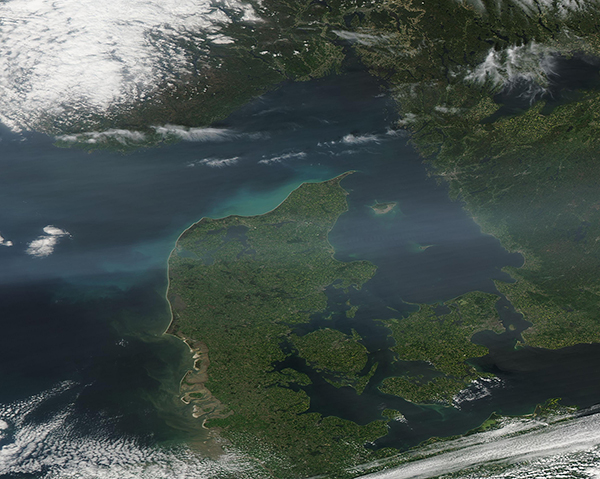Images
May 28, 2023 - Smoke from Canadian Wildfires over Europe
Tweet
The Canadian wildfire season has been exceptionally severe in 2023, with large, fierce fires scorching huge swaths of western forest and pumping vast rivers of smoke into the atmosphere.
Each spring the fire risk rises in Alberta, Saskatchewan, and the northeastern edge of British Columbia—naturally dry areas that lie in the rain shadow of the Canadian Rockies. There is a period each year, after snow melts but before spring growth begins, that dry forest undergrowth is exposed. The risk of wildfire usually increases in March, and the region typically suffers several handfuls of small, short-lived blazes for a few months after that time.
But in May 2023, this naturally fire-prone dry period coincided with unusually hot and windy weather, turning what normally would have been scattered small fires into huge wildland blazes that raged for several weeks. The fires, ignited by lightning or human activity, charred more than 1 million hectares (400 square miles) as of May 24, and lofted smoke high into the atmosphere.
The smoke blanketed the skies of North America for weeks, followed the curves of the jet streak, and swirled into two separate extratropical cyclones. By late May, streams of airborne smoke had crossed the Atlantic Ocean to reach Europe.
On May 25, the Moderate Resolution Imaging Spectroradiometer (MODIS) on board NASA’s Terra satellite acquired a true-color image of a streak of smoke over Denmark and Sweden. The smoke originated in Western Canada, more than 4,200 miles (6,760 km) away.
Image Facts
Satellite:
Terra
Date Acquired: 5/25/2023
Resolutions:
1km (539.8 KB), 500m (1.3 MB), 250m (940.6 KB)
Bands Used: 1,4,3
Image Credit:
MODIS Land Rapid Response Team, NASA GSFC
Tweet
The Canadian wildfire season has been exceptionally severe in 2023, with large, fierce fires scorching huge swaths of western forest and pumping vast rivers of smoke into the atmosphere.
Each spring the fire risk rises in Alberta, Saskatchewan, and the northeastern edge of British Columbia—naturally dry areas that lie in the rain shadow of the Canadian Rockies. There is a period each year, after snow melts but before spring growth begins, that dry forest undergrowth is exposed. The risk of wildfire usually increases in March, and the region typically suffers several handfuls of small, short-lived blazes for a few months after that time.
But in May 2023, this naturally fire-prone dry period coincided with unusually hot and windy weather, turning what normally would have been scattered small fires into huge wildland blazes that raged for several weeks. The fires, ignited by lightning or human activity, charred more than 1 million hectares (400 square miles) as of May 24, and lofted smoke high into the atmosphere.
The smoke blanketed the skies of North America for weeks, followed the curves of the jet streak, and swirled into two separate extratropical cyclones. By late May, streams of airborne smoke had crossed the Atlantic Ocean to reach Europe.
On May 25, the Moderate Resolution Imaging Spectroradiometer (MODIS) on board NASA’s Terra satellite acquired a true-color image of a streak of smoke over Denmark and Sweden. The smoke originated in Western Canada, more than 4,200 miles (6,760 km) away.
Image Facts
Satellite:
Terra
Date Acquired: 5/25/2023
Resolutions:
1km (539.8 KB), 500m (1.3 MB), 250m (940.6 KB)
Bands Used: 1,4,3
Image Credit:
MODIS Land Rapid Response Team, NASA GSFC




